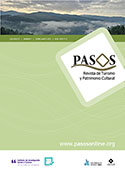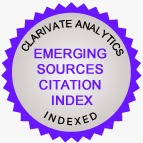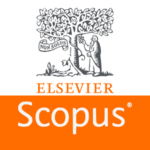Exploring tourists' intention to use smart tourism apps
DOI:
https://doi.org/10.25145/j.pasos.2025.23.006Keywords:
apps, smart tourism, destination marketing, intention to use, UTAUT2Abstract
This study investigates tourists’ intention to use apps when travelling and the factors that influence this intention. Although various studies have addressed the adoption of different technologies, how tourists approach technologies featuring smart destination functions has scarcely been studied. To study this area, we used a model based on the theoretical UTAUT2 model to understand the motivations behind the adoption of these apps. An online survey was conducted, resulting in 107 responses. We then tested our model using partial least squares structural equation modelling (PLS-SEM). The results suggest that outcome expectancy, habit, and facilitating conditions positively influence intention to use tourism apps. However, we were unable to confirm that effort expectancy, social influence, hedonic motivation, and the price/value relationship affect intention to use. At the end of the article, we discuss possible practical implications for developers and tourist destination managers.
Downloads
Publication Facts
Reviewer profiles N/A
Author statements
- Academic society
- PASOS. Revista de Turismo y Patrimonio Cultural
- Publisher
- Instituto Universitario de Investigación Social y Turismo. Universidad de La Laguna (España) - Instituto Universitario da Maia ISMAI (Portugal)
References
Amaro, S., & Duarte, P. (2013). Online travel purchasing: A literature review. Journal of Travel & Tourism Marketing, 30(8), 755-785.
Assaker, G., Hallak, R., & El-Haddad, R. (2020). Consumer usage of online travel reviews: Expanding the unified theory of acceptance and use of technology 2 model. Journal of Vacation Marketing, 26(2), 149-165.
Baptista, G., & Oliveira, T. (2015). Understanding mobile banking: The unified theory of acceptance and use of technology combined with cultural moderators. Computers in Human Behavior, 50, 418-430.
Buhalis, D., & Amaranggana, A. (2014). Smart tourism destinations. In Information and Communication Technologies in Tourism 2014: Proceedings of the International Conference in Dublin, Ireland, January 21-24, 2014 (553-564). Springer International Publishing.
Buhalis, D., & Moldavska, I. (2022). Voice assistants in hospitality: using artificial intelligence for customer service. Journal of Hospitality and Tourism Technology, 13(3), 386-403.
Buhalis, D. (2020). Technology in tourism-from information communication technologies to eTourism and Smart tourism towards ambient intelligence tourism: A perspective article. Tourism Review, 75(1), 267-272.
Bulchand-Gidumal, J., William Secin, E., O’Connor, P., & Buhalis, D. (2023). Artificial intelligence’s impact on hospitality and tourism marketing: exploring key themes and addressing challenges. Current Issues in Tourism, 1-18.
Carmines, E. G., & Zeller, R. A. (1979). Reliability and validity assessment. Sage publications.
Chi, O. H., Gursoy, D., & Chi, C. G. (2020). Tourists’ attitudes toward the use of artificially intelligent (AI) devices in tourism service delivery: moderating role of service value seeking. Journal of Travel Research, 61(1), 170-185.
Chin, W. W. (1998). The partial least squares approach to structural equation modeling. Modern Methods for Business Research, 295(2), 295-336.
Chin, W. W. (2009). How to write up and report PLS analyses. In Handbook of partial least squares: Concepts, methods and applications (pp. 655-690). Berlin, Heidelberg: Springer Berlin Heidelberg.
Ciftci, O., Choi, E. K. C., & Berezina, K. (2021). Let’s face it: are customers ready for facial recognition technology at quick-service restaurants?. International Journal of Hospitality Management, 95, 102941.
Chung, N., Lee, H., Kim, J. Y., & Koo, C. (2018). The role of augmented reality for experience-influenced environments: The case of cultural heritage tourism in Korea. Journal of Travel Research, 57(5), 627-643.
Çalışkan, G., Yayla, İ., & Pamukçu, H. (2023). The use of augmented reality technologies in tourism businesses from the perspective of UTAUT2. European Journal of Innovation Management.
Diamantopoulos, A., & Siguaw, J. A. (2006). Formative versus reflective indicators in organizational measure development: A comparison and empirical illustration. British Journal of Management, 17(4), 263-282.
Dijkstra, T. K., & Henseler, J. (2015). Consistent partial least squares path modeling. MIS Quarterly, 39(2), 297-316.
do Valle, P. O., & Assaker, G. (2015). Using partial least squares structural equation modeling in tourism research: A review of past research and recommendations for future applications. Journal of Travel Research, 55(6), 695-708.
Escobar-Rodríguez, T., & Carvajal-Trujillo, E. (2014). Online purchasing tickets for low cost carriers: An application of the unified theory of acceptance and use of technology (UTAUT) model. Tourism Management, 43, 70-88.
Fornell, C., & Larcker, D. F. (1981). Evaluating structural equation models with unobservable variables and measurement error. Journal of Marketing Research, 18(1), 39-50.
Foroughi, B., Sitthisirinan, S., Iranmanesh, M., Nikbin, D., & Ghobakhloo, M. (2023). Determinants of travel apps continuance usage intention: extension of technology continuance theory. Current Issues in Tourism, 1-17.
Gavilan, D., Martínez-Navarro, G., & Fernández-Lores, S. (2017). Influencia social online: nuevas tecnologías en la comunicación del sector turístico. Revista ICONO 14. Revista Científica de Comunicación y Tecnologías Emergentes, 15(2), 138-167.
Geisser, S. (1975). The predictive sample reuse method with applications. Journal of the American Statistical Association, 70(350), 320-328.
Gupta, A., & Dogra, N. (2017). Tourist adoption of mapping apps: A UTAUT2 perspective of smart travellers. Tourism and Hospitality Management, 23(2), 145-161.
Hair, J. F., Hult, G. T. M., Ringle, C. M., Sarstedt, M., Danks, N. P., & Ray, S. (2021). Evaluation of reflective measurement models. In Partial Least Squares Structural Equation Modeling (PLS-SEM) Using R (75-90). Springer, Cham.
Hair, J. F., Ringle, C. M., & Sarstedt, M. (2011). PLS-SEM: Indeed a silver bullet. Journal of Marketing Theory and Practice, 19(2), 137–149.
Henseler, J., Hubona, G., & Ray, P. A. (2016). Using PLS path modeling in new technology research: updated guidelines. Industrial Management & Data systems, 116(1), 2-20.
Henseler, J., Ringle, C. M., & Sinkovics, R. R. (2009). The use of partial least squares path modeling in international marketing. Advances in International Marketing, 20, 277-319.
Huang, C. D., Goo, J., Nam, K., & Yoo, C. W. (2017). Smart tourism technologies in travel planning: The role of exploration and exploitation. Information & Management, 54(6), 757-770.
Jeong, M., & Shin, H. H. (2020). Tourists’ experiences with smart tourism technology at smart destinations and their behavior intentions. Journal of Travel Research, 59(8), 1464-1477.
Kenny, D. A., & Judd, C. M. (2019). The unappreciated heterogeneity of effect sizes: Implications for power, precision, planning of research, and replication. Psychological Methods, 24(5), 578.
Khayer, A., & Bao, Y. (2019). The continuance usage intention of Alipay: Integrating context-awareness and technology continuance theory (TCT). The Bottom Line, 32(3), 211-229.
Kline, R. B. (2011). Principles and practice of structural equation modeling (3. Baskı). New York, NY: Guilford, 14, 1497-1513.
Kurata, Y., & Hara, T. (2013). CT-planner4: Toward a more user-friendly interactive day-tour planner. In Information and Communication Technologies in Tourism 2014: Proceedings of the International Conference in Dublin, Ireland, January 21-24, 2014 (73-86). Springer International Publishing.
Limayem, M., Hirt, S. G., & Cheung, C. M. (2007). How habit limits the predictive power of intention: The case of information systems continuance. MIS Quarterly, 705-737.
Lin, C. P., & Anol, B. (2008). Learning online social support: an investigation of network information technology based on UTAUT. CyberPsychology & behavior, 11(3), 268-272.
Lu, L., Cai, R., & Gursoy, D. (2019). Developing and validating a service robot integration willingness scale. International Journal of Hospitality Management, 80, 36-51.
Lu, H. P., & Su, P. Y. J. (2009). Factors affecting purchase intention on mobile shopping websites. Internet Research, 19(4), 442-458.
Marchewka, J. T., & Kostiwa, K. (2007). An application of the UTAUT model for understanding student perceptions using course management software. Communications of the IIMA, 7(2), 10.
Medeiros, M., Ozturk, A., Hancer, M., Weinland, J., & Okumus, B. (2022). Understanding travel tracking mobile application usage: An integration of self determination theory and UTAUT2. Tourism Management Perspectives, 42, 100949.
Nikolskaya, E. Y., Lepeshkin, V. A., Blinova, E. A., Kulgachev, I. P., & Ilkevich, S. V. (2019). Improvement of digital technology in the tourism sector. Journal of Environmental Management & Tourism, 10(6 (38)), 1197-1201.
Moriuchi, E. (2021). An empirical study of consumers' intention to use biometric facial recognition as a payment method. Psychology & Marketing, 38(10), 1741-1765.
Podsakoff, P. M., & Organ, D. W. (1986). Self-reports in organizational research: Problems and prospects. Journal of Management, 12(4), 531-544.
Raman, A., & Don, Y. (2013). Preservice teachers' acceptance of learning management software: An application of the UTAUT2 model. International Education Studies, 6(7), 157-164.
Ringle, C. M., Wende, S., & Becker, J. M. (2022). SmartPLS 4. Oststeinbek: SmartPLS GmbH. J. Appl. Struct. Equ. Model., http://www.smartpls.com.
Sarstedt, M., Hair, J. F., Ringle, C. M., Thiele, K. O., & Gudergan, S. P. (2016). Estimation issues with PLS and CBSEM: Where the bias lies! Journal of Business Research, 69(10), 3998–4010.
Sia, P. Y. H., Saidin, S. S., & Iskandar, Y. H. P. (2023). Smart mobile tourism app featuring augmented reality and big data analytics: an empirical analysis using UTAUT2 and PCT models. Journal of Science and Technology Policy Management.
Stone, M. (1974). Cross-validation and multinomial prediction. Biometrika, 61(3), 509-515.
Venkatesh, V., & Morris, M. G. (2000). Why don't men ever stop to ask for directions? Gender, social influence, and their role in technology acceptance and usage behavior. MIS Quarterly, 115-139.
Venkatesh, V., Morris, M. G., Davis, G. B., & Davis, F. D. (2003). User acceptance of information technology: Toward a unified view. MIS Quarterly, 425-478.
Venkatesh, V., Thong, J. Y., & Xu, X. (2012). Consumer acceptance and use of information technology: extending the unified theory of acceptance and use of technology. MIS Quarterly, 157-178.
Voicu, M. C., Bărbulescu, A., & Abrudan, D. (2022). On a City Guide App Model. Sustainability, 14(23), 15758.
Weng, G. S., Zailani, S., Iranmanesh, M., & Hyun, S. S. (2017). Mobile taxi booking application service’s continuance usage intention by users. Transportation Research Part D: Transport and Environment, 57, 207-216.
Yang, K. (2010). Determinants of US consumer mobile shopping services adoption: implications for designing mobile shopping services. Journal of Consumer Marketing, 27(3), 262-270.
Zhou, T., Lu, Y., & Wang, B. (2010). Integrating TTF and UTAUT to explain mobile banking user adoption. Computers in Human Behavior, 26(4), 760-767.
Downloads
Published
How to Cite
Issue
Section
License
Copyright (c) 2024 Tatiana David-Negre, Desiderio Gutiérrez Taño

This work is licensed under a Creative Commons Attribution-NonCommercial-NoDerivatives 4.0 International License.
I confirm that the work is original (of my/our authorship), and that it will not be submitted to other journals or publications until the final resolution of the review process in PASOS, RTPC.
I authorize the publication of my work by PASOS, PSTN of free and open access in any of the formats that I deem appropriate, for an indefinite period of time and as a non-remunerated collaboration.
Likewise, the author(s) understands that the published work may be linked or deposited on any server or included in other publications (republication), provided that the new place and/or new edition references the original publication and acknowledges the authorship and copyright ownership of PASOS RTPC publications.
Authors understand that a plagiarism-self-plagiarism check will be performed, and the article may be removed at any time from the editorial flow.










